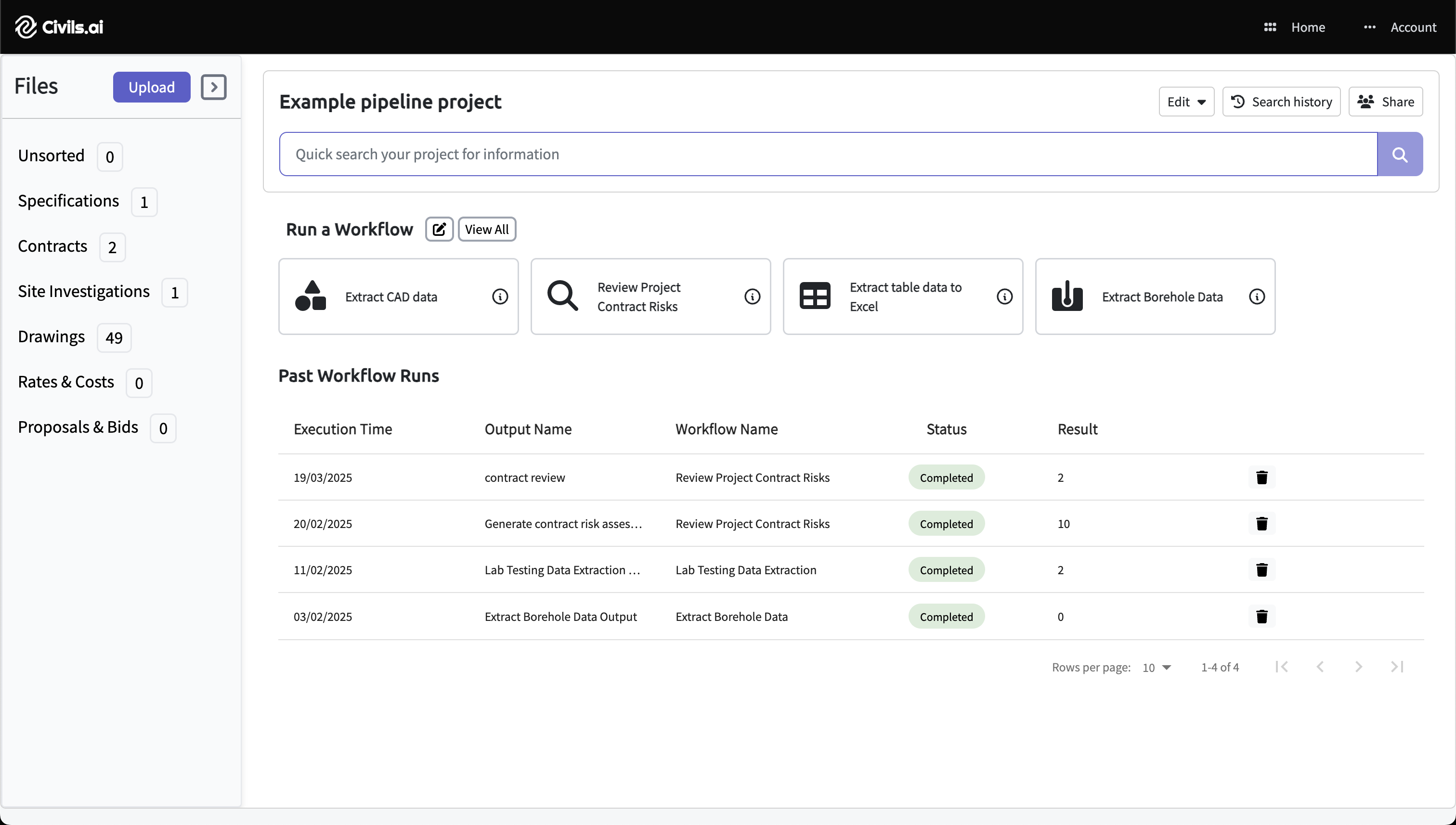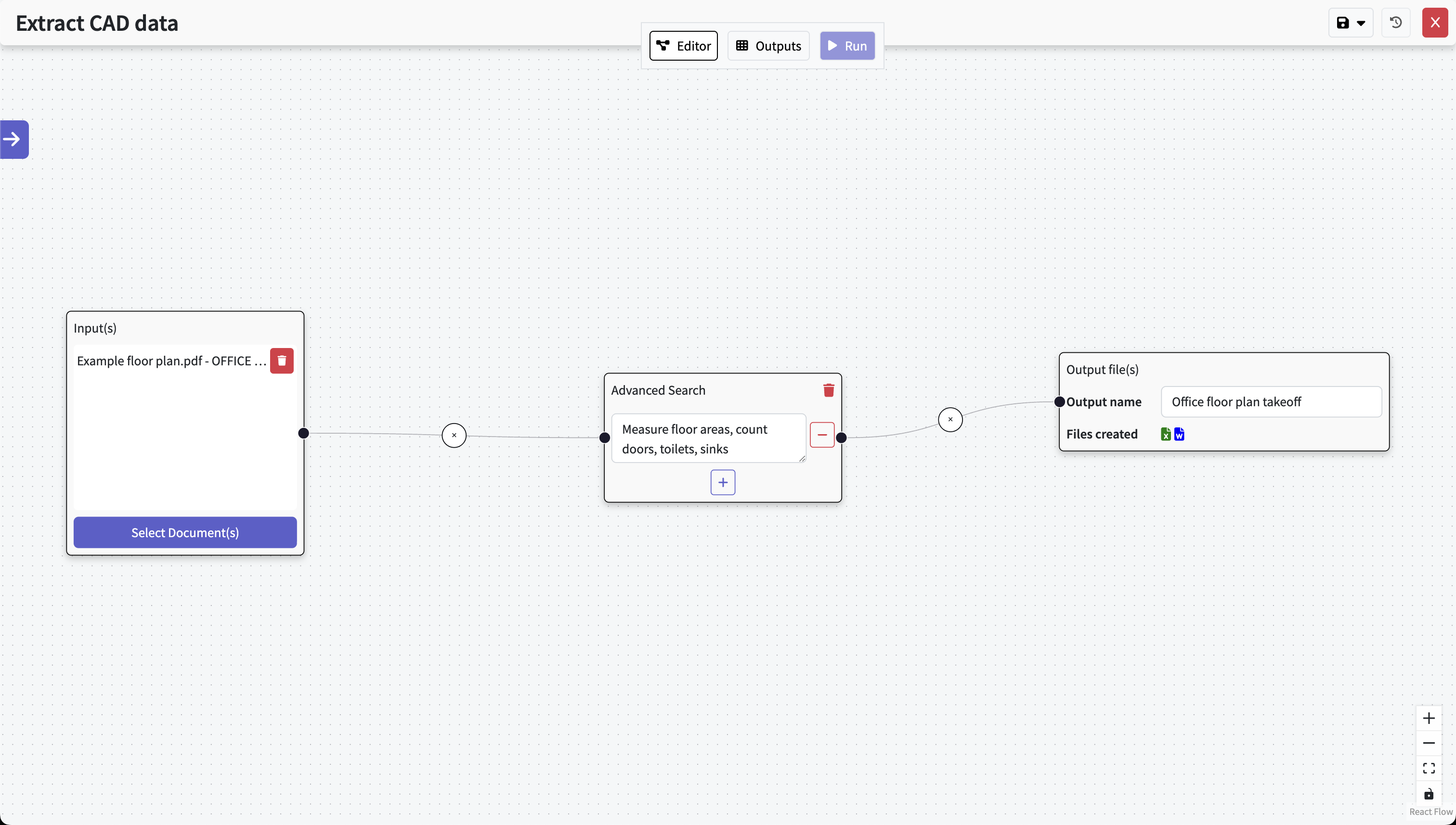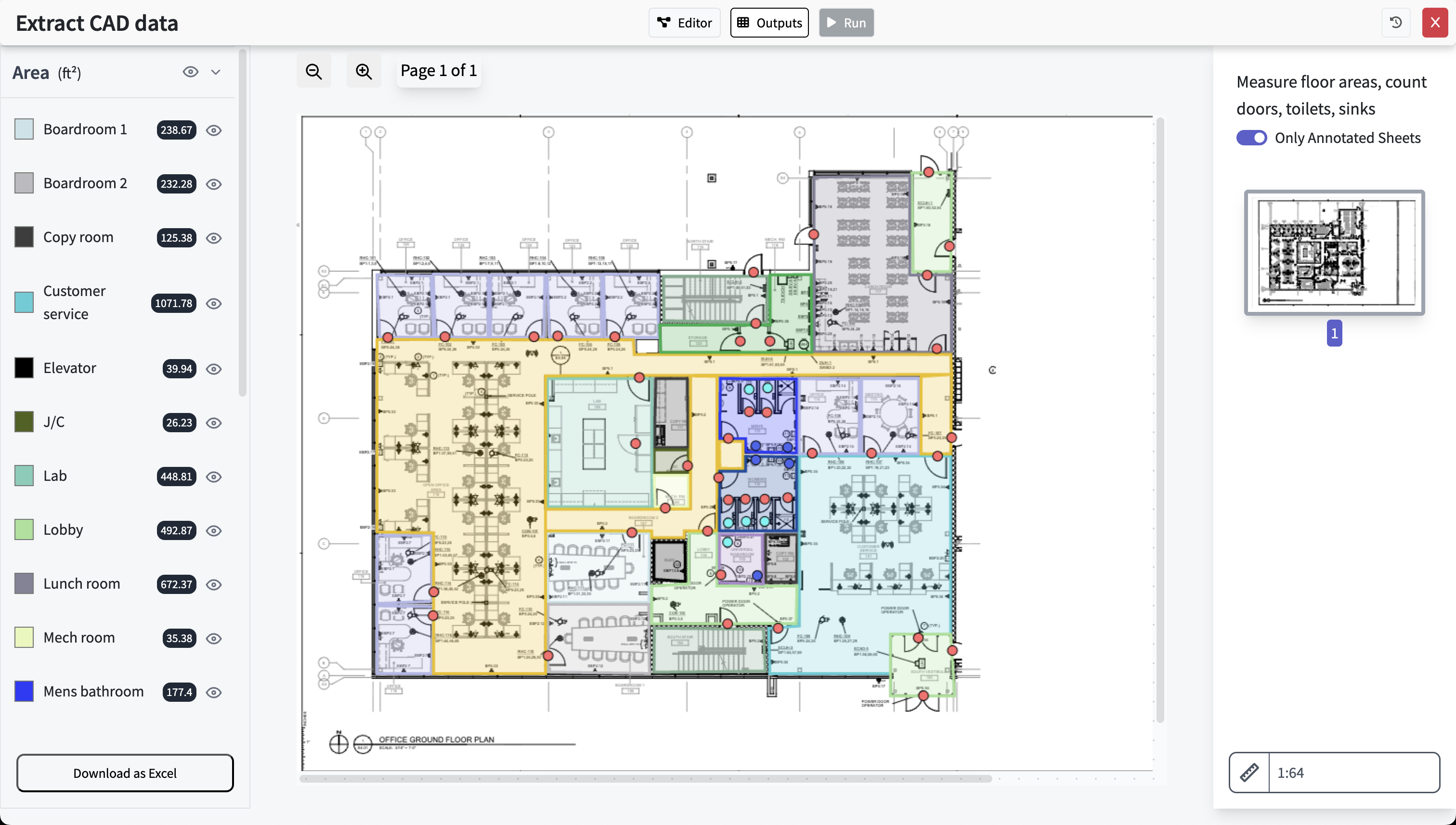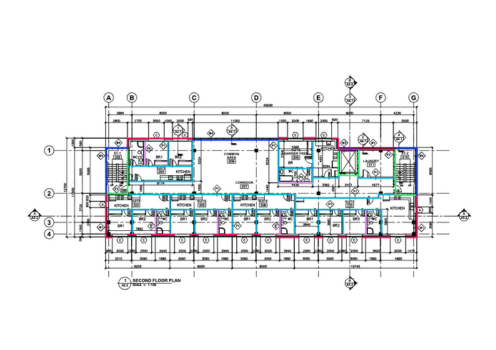AI for Masonry Takeoff: Block/Brick Wall Runs & Opening Deductions

Upload PDFs and run a simple prompt. A draft masonry takeoff is prepared and you’re notified when processing is completed.
How It Works
- Upload your PDFs — Add plan drawings and any wall type/openings schedules or notes you want considered.
- Write your prompt — Tell Civils.ai what you need (e.g. “Block/brick wall runs by type and level; deduct all shown openings”).
- Click “Run” — The platform prepares a draft masonry takeoff from your drawings and schedules.
- QA review & adjust — Your team reviews the draft, fixes issues, and confirms assumptions (heights, partial openings, special walls).
- Share with confidence — Release reviewed drawings and quantities with clear references back to the source PDFs.

Upload PDFs
Drag & drop your drawing PDFs and select Extract CAD data. Works with scanned, historic, and multi-sheet sets.

Type out your prompt
Say what you need in plain English (e.g. “measure CMU/brick wall runs by type & level; count and deduct openings by size”). Hit Run; AI drafts the takeoff and our QA team reviews results.

Get results, review & export
What the Draft Masonry Takeoff Can Cover
The goal is a clean starting point for pricing—prepared from your drawings and schedules—so your team spends more time refining and less time starting from scratch.
Typical items
- Block/brick wall runs by type (e.g., CMU thickness, cavity, veneer) and by level
- Opening deductions for doors/windows where shown or scheduled
- Basic materials breakdown (e.g., CMU vs. brick) to support pricing discussions
Clarity about heights
Heights are taken from the drawings/specs you provide (story heights, parapets, etc.). The system does not infer heights beyond what’s documented.
What to Expect (and What Not To)
Overview
What you can expect
- A prepared draft masonry takeoff to help your bid
- Clear references back to the drawings and schedules
- Faster internal reviews and fewer back-and-forths
Limitations to note
- Not a 100% automated takeoff—human review is essential
- Heights are taken strictly from your plans/specs; no height inference
- Complex curved/radius walls or specialty masonry may need manual checks

- Interior
- Exterior
- Stud
- Masonry
- Gypsum
- Railings
- Fences
FAQ
Is this suitable for busy bid periods?
Yes. It prepares a masonry draft quickly so your team can review, adjust, and price with confidence instead of starting from scratch.
Can we trust the numbers?
Use the draft as a starting point. Your QA team checks and fixes anything that needs attention before releasing quantities to stakeholders.
Where do the quantities come from?
From the PDFs you upload—plan drawings and schedules. Everything is traceable to the source pages for easy review and clarification.
What about complex conditions?
Specialty masonry, curved walls, or atypical openings may need manual verification. The tool prepares a clear draft your team can finalize.
Prepare Stronger Masonry Bids with Civils.ai
Upload drawings and schedules, write a quick prompt, click run—then let your QA team review and release a clear, traceable masonry takeoff.
Civils.ai is an assistive tool for bid preparation. Final quantities and assumptions should be reviewed and approved by qualified professionals.